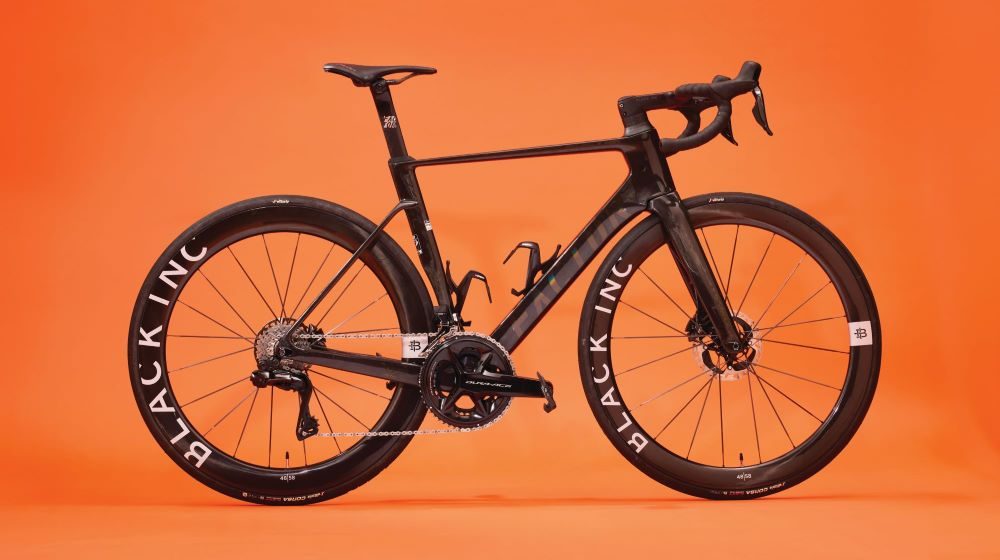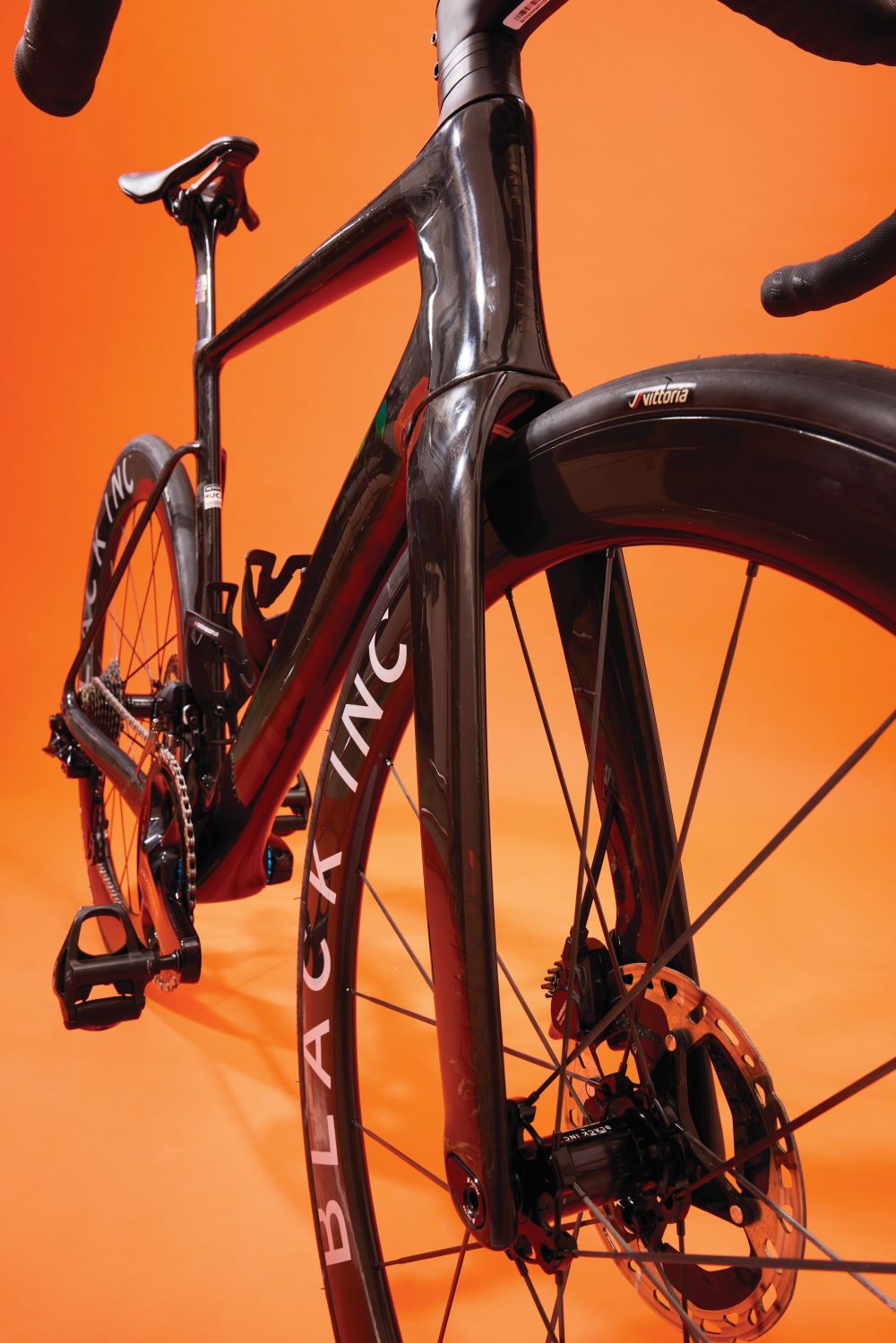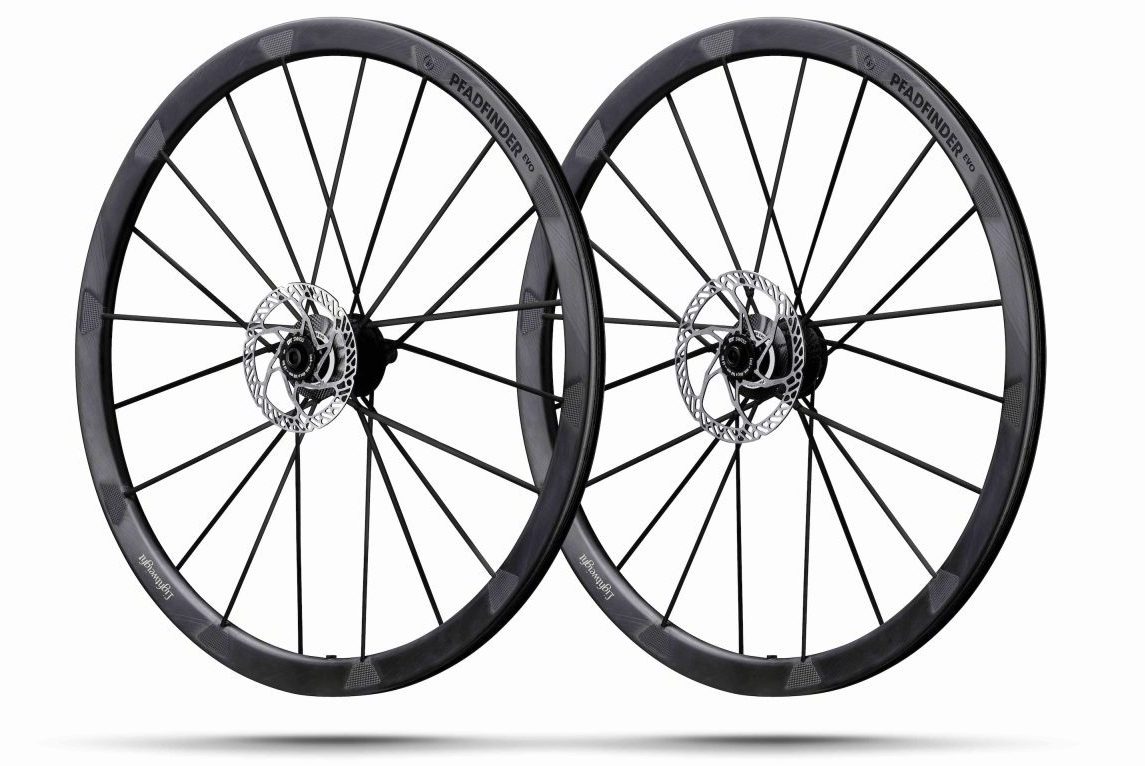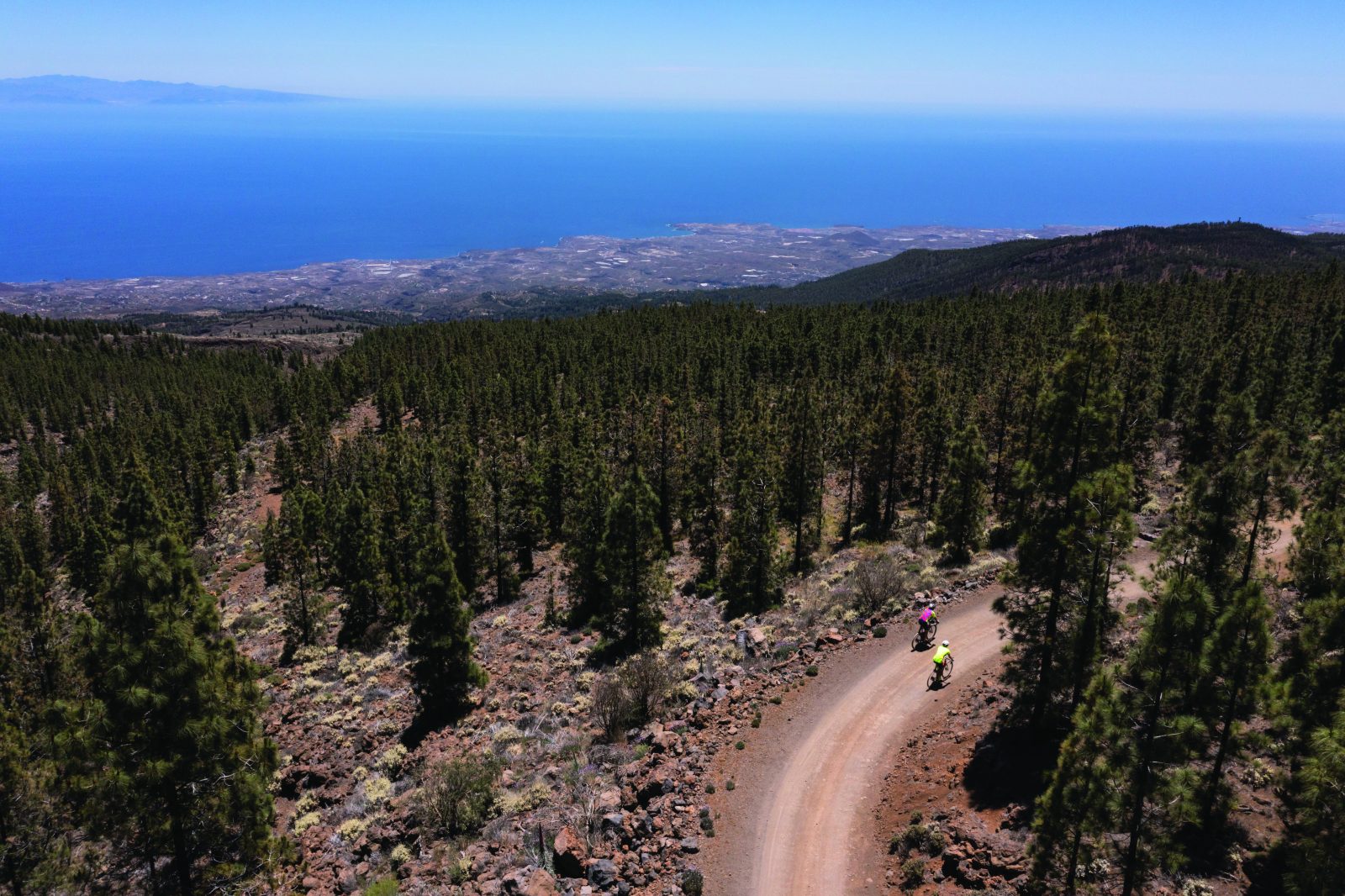It took Factor four years and a new factory, but the Ostro VAM is now a much-improved bike.

Words Sam Challis Photography Tapestry
‘The instructions I gave our design team when it came to revising the original Ostro basically amounted to “just don’t screw it up”,’ says Factor owner Rob Gitelis.
‘We wanted to improve aerodynamics but only if we didn’t have to do it at the expense of the Ostro’s other characteristics, as we were happy with aspects such as stiffness, handling and weight.’
If the brand’s claims are to be believed (and given how transparent Gitelis and Factor’s director of engineering, Graham Shrive, have been about how the bike was developed and validated, it wouldn’t seem unreasonable to believe them) it is a case of mission accomplished.
Factor says the Ostro 2 saves 0.055 in the bike’s coefficient of drag, which is meaningless to most people, so to put it in simple terms the new bike is 10% faster than its predecessor.
Expressed in power, the Ostro 2 is a claimed seven watts more efficient at 45kmh on average across a range of wind angles, and Gitelis says it is more aerodynamically efficient than a Cervélo S5 by 6% and a Specialized Tarmac SL8 by almost 7% over the same yaw sweep.
Those companies may wish to dispute those claims, but whichever way you slice it, the new bike is significantly faster than the old one.
‘We had the opportunity to make these gains because of developments that occurred during the previous bike’s tenure,’ says Shrive.
‘We built a new facility that streamlines our development process; UCI rule changes around frameset and component depth-to-width ratios let us change tube shapes; Shimano going semi-wireless helped us simplify the Ostro’s front end; computational fluid dynamics software is four years more powerful; and there were aspects of the industrial design process we could “de-bottleneck”.’
Shrive gives the example of the seatpost fastener changing from a wedge binder at the front of the tube, ‘which wasn’t well liked’, to a clamping plate on the back of the tube.
It’s easier to make and use, and better for aero performance because it extends the depth of the seat tube.
Going with the flow
It is fair to say the old Ostro was hardly a slow bike, and Factor believes it is still competitive with the best race bikes on the market today.
Shrive says to improve, the design had to be broken down into chunks, with each area developed individually before being cohesively stitched back together.

‘As evident in the final product, we spent most of our time reworking the front of the bike, making it not only fast in itself but also better at manipulating what it does to the airflow downstream,’ says Shrive.
The new Ostro’s fork is now designed around bigger 28mm tyres, but is in fact smaller in frontal area than the outgoing bike’s fork.
‘We took a lot of bulk out of the fork crown, and the fork legs’ stance is generally narrower to produce less of a drag impact downstream,’ says Shrive.
‘Likewise, the fork blades are shaped to more smoothly interact with the wheel axle and brake calliper.’
The fork’s leading edge is further forward too, pairing neatly with an extended head tube that is more heavily waisted than before.
‘The nose cone and hourglass frontal profile both reduce frontal area and extend flow attachment, steering the airflow in between the rider’s legs,’ says Shrive.
‘The result is lower drag not just in a headwind but at a range of different wind angles.’
The head tube now flows more neatly into a tapered top tube.
Viewed from above, the top tube’s longitudinal cross-section is almost perfectly aerofoil shaped.
‘The previous head-to-top tube transition had inflection points just behind the head tube where it pinched inward,’ says Shrive. ‘This encouraged airflow detachment.
The new shape is a longer, tapering profile to the rear, facilitated by a thinner seat tube.
This was allowed by the UCI reducing the minimum tube thickness, something we also took advantage of in our 02 VAM.’
Loophole gains
The seatpost width has been reduced by 36%, but while the seat tube correspondingly matches that as a truncated aerofoil at its top, it varies in profile down its length more than any other tube in the bike.
Just above the front derailleur mount, for example, the tube is quasi-triangular, acting as the nose to an aerofoil completed by the tyre and wheel rim tucked in behind it.
Shrive says the interplay in the area is even given a little boost by new bottle cages.
‘We’ve done something pretty cool here,’ he says.
‘We figured pros eject their bottles for the sprint. While the down tube cage is hidden, the seat tube cage is more exposed, so we should make that cage aero.

We did it by adding angled vanes either side of the cage mounting point, which funnel and accelerate the air through the cage, along the seat tube and off across the back of the bike.
It’s basically a fairing, but not, so it’s almost cheating, but not.’
As you might expect with several tube profiles slimming down, the new Ostro drops a little weight, but only to the tune of around 50g or so.
New Black Inc 48/58 wheels that launch alongside the Ostro help to drop the scales more significantly, coming in more than 200g lighter than the Black Inc 60 wheels that came with the previous Ostro.
As such Factor says UCI weight limit-troubling builds should be easy to achieve.
Aero bike speed at a climber’s bike weight? It sounds too good to be true.
Cyclist will determine the veracity of Factor’s claims when we put the Ostro to the test in a few issues’ time.
Factor Ostro VAM
Au Pricing $18,399,
Website au.factorbikes.com


